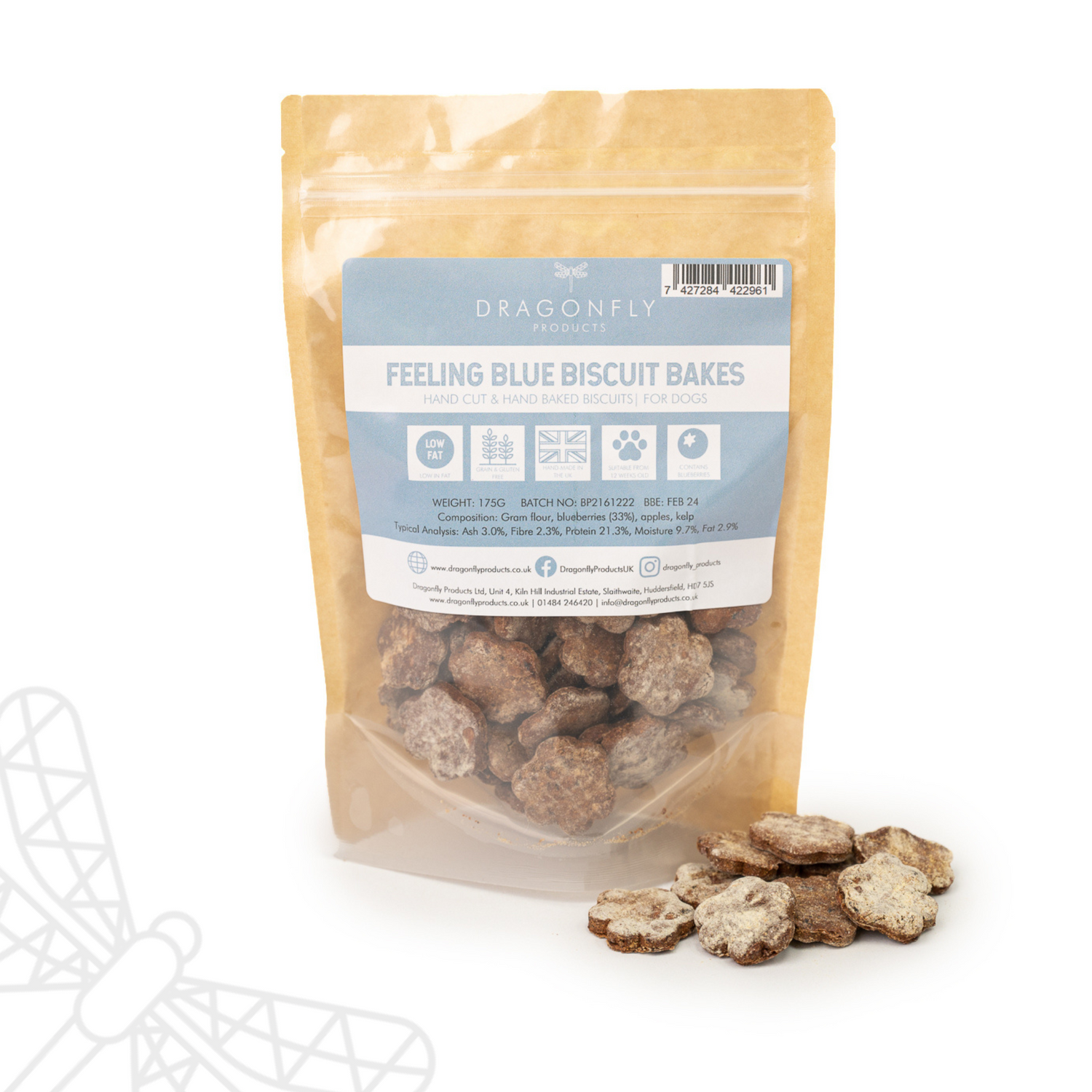
What is Bloat in dogs?
The condition progresses rapidly and requires immediate veterinary intervention to save the dog’s life. Bloat is most commonly seen in large, deep-chested breeds, although it can occur in any dog. Understanding bloat, its signs, and how to prevent it can be crucial in protecting your dog from this dangerous condition.
Table of Contents
- What are the Symptoms of Bloat in Dogs?
- What Causes Bloat in Dogs?
- How Can I Prevent Bloat in My Dog?
- How is Bloat in Dogs Treated?
- Is Bloat in Dogs an Emergency?
- What Breeds are Most at Risk for Bloat?
- How Quickly Does Bloat Develop in Dogs?
- Can a Dog Survive Bloat Without Surgery?
- What Should I Do If I Think My Dog Has Bloat?
What are the Symptoms of Bloat in Dogs?
Recognising the symptoms of bloat in dogs is crucial for early intervention. Some of the most common signs include:
-
Distended Abdomen: The most obvious symptom is a swollen or distended abdomen, which may be hard to the touch. This occurs due to the accumulation of gas or fluid in the stomach.
-
Unproductive Retching: Dogs with bloat often try to vomit but are unable to bring anything up. This unproductive retching or gagging is a hallmark sign of bloat.
-
Excessive Drooling: Increased salivation is a common symptom as the dog attempts to alleviate the discomfort caused by the expanding stomach.
-
Restlessness and Anxiety: Dogs experiencing bloat may exhibit signs of restlessness, such as pacing, inability to sit or lie down comfortably, or constantly changing positions.
-
Rapid Breathing and Panting: Due to pain and discomfort, dogs with bloat may breathe more rapidly or pant excessively.
-
Pale Gums: As bloat progresses, a dog's gums may become pale or bluish due to reduced blood flow and oxygen levels.
-
Weakness and Collapse: In severe cases, the dog may become weak, collapse, or show signs of shock, such as a rapid heart rate, weak pulse, or low body temperature.
If you notice any of these symptoms in your dog, it's crucial to seek immediate veterinary care, as bloat can progress rapidly and become life-threatening.
What Causes Bloat in Dogs?
The exact cause of bloat is not fully understood, but several risk factors have been identified:
-
Breed Predisposition: Large, deep-chested breeds, such as Great Danes, German Shepherds, Doberman Pinschers, and Standard Poodles, are more susceptible to bloat. The chest shape allows more room for the stomach to twist.
-
Genetics: Some studies suggest that dogs with a family history of bloat are at a higher risk of developing the condition. This could be due to inherited anatomical features or other genetic predispositions.
-
Eating Habits: Dogs that eat quickly, consume large volumes of food at once, or drink large amounts of water immediately before or after eating are at higher risk of developing bloat. Eating from raised food bowls and exercising immediately after meals may also increase the risk.
-
Diet: Diets high in fermentable carbohydrates, fat, or food that swells when moistened (such as kibble) have been associated with an increased risk of bloat. Feeding only once a day and feeding dry kibble can also contribute.
-
Stress and Anxiety: Stressful events or environments can increase a dog's risk of bloat. High-strung, nervous, or anxious dogs are more likely to experience this condition.
-
Age: Older dogs are more likely to develop bloat. The risk increases as a dog ages, possibly due to decreased elasticity of the stomach or weakened stomach muscles.
Understanding these risk factors can help you make informed decisions about your dog's diet, exercise, and overall care.
How Can I Prevent Bloat in My Dog?
While bloat cannot be entirely prevented, there are several steps you can take to reduce your dog’s risk:
-
Feed Smaller, More Frequent Meals: Instead of one large meal, feed your dog two or three smaller meals throughout the day to reduce the risk of stomach distention.
-
Slow Down Eating: Use slow-feed bowls or puzzle feeders to prevent your dog from eating too quickly. You can also spread their food out on a flat surface or hand-feed them to encourage slower eating.
-
Avoid Vigorous Exercise After Meals: Wait at least 1 to 2 hours after feeding before allowing your dog to engage in vigorous activity or exercise. This helps prevent stomach torsion.
-
Choose an Appropriate Diet: Opt for a high-quality diet with adequate fibre and lower fat content. Avoid foods that expand significantly when moistened, such as certain types of kibble.
-
Manage Stress: Try to minimise stress in your dog’s environment. This might include providing a calm, quiet place for your dog to eat and avoiding major changes to their routine.
-
Consider Preventive Surgery: In some high-risk breeds or dogs with a history of bloat, a prophylactic gastropexy (a surgical procedure that tacks the stomach to the abdominal wall) can be performed to prevent the stomach from twisting.
While these steps can reduce the risk of bloat, it’s important to remain vigilant and aware of the symptoms, especially if your dog is in a high-risk category.
How is Bloat in Dogs Treated?
Bloat is a medical emergency, and prompt veterinary care is essential. Treatment typically involves several steps:
-
Stabilisation: The first priority in treating bloat is stabilising the dog. This may involve administering IV fluids to combat shock, pain relief medications, and oxygen therapy to support breathing.
-
Decompression: To relieve the pressure in the stomach, the vet may insert a tube through the dog’s mouth into the stomach or use a needle to puncture the stomach wall and release the trapped gas.
-
Surgery: If the stomach has twisted (volvulus), surgery is required to untwist the stomach and restore blood flow. During the procedure, the vet will also evaluate the stomach and spleen for any damage. In severe cases, portions of the stomach or spleen may need to be removed.
-
Gastropexy: To prevent recurrence, a gastropexy may be performed during the surgery. This procedure involves tacking the stomach to the abdominal wall to prevent future twisting.
-
Post-Operative Care: After surgery, the dog will require intensive monitoring and supportive care, including pain management, antibiotics, and gradual reintroduction to food and water. Recovery time varies depending on the severity of the condition and the dog’s overall health.
Early recognition and rapid intervention are key to improving the chances of survival for dogs with bloat.
Is Bloat in Dogs an Emergency?
Yes, bloat is a medical emergency that requires immediate veterinary attention. The condition can progress rapidly, leading to shock and death within hours if left untreated. The twisting of the stomach cuts off the blood supply, leading to tissue necrosis (death) and systemic shock. Time is of the essence when dealing with bloat, and quick action can be the difference between life and death for your dog.
What Breeds are Most at Risk for Bloat?
While bloat can occur in any dog, certain breeds are more predisposed to the condition due to their anatomy and genetics. Breeds with deep, narrow chests are at the highest risk. Some of the breeds most commonly affected by bloat include:
- Great Danes
- German Shepherds
- Standard Poodles
- Doberman Pinschers
- Weimaraners
- Saint Bernards
- Irish Setters
- Bloodhounds
- Boxers
Mixed-breed dogs with deep chests can also be at risk. Understanding your dog’s breed-specific risks can help you take preventive measures and stay vigilant for early signs of bloat.
How Quickly Does Bloat Develop in Dogs?
Bloat can develop very quickly, often within a matter of hours. The progression of the condition can vary, but it generally follows a rapid and severe course once the stomach twists. The initial stage of gastric dilation can occur in as little as 30 minutes, and volvulus can follow shortly thereafter. Once the stomach has twisted, blood flow is compromised, and shock can set in rapidly.
Given the speed at which bloat can become life-threatening, recognising the symptoms early and seeking immediate veterinary care is crucial.
Can a Dog Survive Bloat Without Surgery?
While some cases of bloat can be managed with medical intervention, such as decompression with a stomach tube or trocarization, most cases involving volvulus (twisting of the stomach) will require surgery. The twisting cuts off the blood supply to the stomach and other organs, which can lead to tissue death and systemic shock if not corrected promptly.
Without surgery, a dog with a twisted stomach has a very low chance of survival. Surgery not only untwists the stomach but also allows the veterinarian to assess the extent of any damage and take necessary actions, such as removing dead tissue or performing a gastropexy to prevent recurrence. Early intervention and surgical treatment greatly improve the chances of survival.
What Should I Do If I Think My Dog Has Bloat?
If you suspect your dog has bloat, treat it as an emergency and seek immediate veterinary care. Time is critical, and delaying treatment can significantly decrease your dog's chances of survival. Here are the steps you should take:
-
Call Your Veterinarian: Inform your veterinarian of your concerns and let them know you are on your way. If your regular vet is not available, go to the nearest emergency animal hospital.
-
Do Not Attempt Home Treatment: Do not try to induce vomiting or give your dog any medications. Bloat is a medical emergency that requires professional intervention.
-
Transport Your Dog Safely: Keep your dog calm and transport them to the veterinary clinic as quickly as possible.
Once at the clinic, the veterinary team will assess your dog’s condition, perform necessary diagnostics, and initiate appropriate treatment to stabilise and address the bloat.
Bloat is a serious and potentially fatal condition that requires immediate attention. By understanding the risk factors, recognizing the symptoms, and knowing what steps to take in an emergency, you can help protect your dog from this life-threatening condition.
For any further help and advice please contact us on 01484 246420 and why not join our social media channels and online community on Instagram, Facebook or YouTube.
With Wags and Woofs,
Laura, Dolly & Reggie




